#heart sutra
Text
This is a void state post. It's important to note that this void state post of mine Is reflecting a bit of my nondualist persepective on the void state.
If you ever feel drained or overwhelmed throughout your so-called void state journey due to anything that goes under the label of "unwanted", REALIZE/KNOW that "draining" "overwhelming" "anything unwanted" are all empty appearances/illusions. Observe and realize that YOU/GOD are always detached from them, or in truth, there is nothing to detach from at all. Surround your character with love and faith, two of the most powerful forces. Without love and faith, what would genuinely have guided your character to connect with YOU (Pure Consciousness/IAMness (the only reality)? Encourage your character to observe the things they love and is on this so-called journey for, as they Is one with these things, and have unwavering faith in that fact. BE LOVE AND HAVE FAITH, the very forces that have led your character to your essence (IAMNESS). Remember, in every movement/action you do or take, you are actually what we refer to as the void state at all times. BE THE VOID STATE that you truly are.
It Is genuinely OKAY❤️ All Is well❤️ You have already succeeded being a void state master, and you IS success and the void state Itself. Keep In "mind" that love and faith has led the one you're playing as to "get to know about the void state", and "connect with It".
Be at ease knowing that YOU are the void state and power Itself and align with peace, with unwavering love and faith for yourself❤️ It Is so sweet to know that you are here for the best for yourself❤️ (What is best for you aka your hearts' desires are genuinely yours, you, and that Is the only reality, as awareness Is what makes expriences/life exist so be aware of that❤️) There Is comfort In knowing this.❤️
You are strong and keep being strong❤️
98 notes
·
View notes
Note
Hi! First off your blog is such an important resource for me in kimono patterns, thank you for keeping it! Secondly, a question. What patterns are associated with death? I know of spider lilies, and pure black kimono accessories for funeral wear, but otherwise not much else. I suspect that kind of pattern would be more of a novelty item print than an estabilished and used pattern.
Hi and thanks for your kinds words! Off the top of my head, they are several patterns associated with death, mostly linked to Buddhism.
Tbh, mourning attire for women are for me more an affair of colors (black/muted) and discreet not-celebratory patterns (it also depends of ones means). Novelty "death-themed"patterns are more and more present in modern kimono, yet you can also find "traditional" ones - even if they are on the rarer side.
Formal mourning garb, as you note, asks for mofuku (black kimono and obi with a few white accessories). Obi usually have very traditional woven ground patterns - for example ryuusui (running water) which kinda symbolize "the flow of life".
For the Buddhist anniversary of one's death and rememberance services, ladies would (when they can afford it) go from all black to half-mourning dress in muted colors like dull greys or ashen purple. For such occasions, you can find Buddhist patterns like sutra (Heart sutra especially), lotus flowers, gorintô (stylized stupa), etc.
More seasonal items could reference Buddhist Obon (festival of the dead) or Higan (more especially autumn equinox Shûbun), but such patterns for very specific events are on the rarer side, and more a matter of taste and style.
Patterns can include higanbana (spider lilies) for Higan, and for Obon: lanterns, cucumber or eggplant "spirit horse", hozuki (ground cherry), nod to Kyoto’s Daimonji kanji, or memento mori-themed motifs (like skeletons, nozarashi or graveplates).
As a step further into morbid imagery, another pattern which can sometimes be found, especially on men juban or haori lining, are decaying corpses (referencing Buddhist meditation on kusôzu or "nine stages of decay"). This was a subject in Japanese art, you can find an example here (cw: corpse depiction).
Hinting at Buddhist concept of impermanence and search for enlightment, Hell courtesan (jigoku dayû) with uchikake coats depicting hellish torments could also enter the death patterns category. Same goes for Buddhist hell imagery of Hell king Enma, or Hell guardians Gozu and Mezu (I believe I saw them on men juban/haori linings + on netsuke).
Finally, because we are talking of death, have a look at this super unsual and puzzling kimono depicting butsunehan (death of Buddha). Becky Mitsui's article is a wild ride xD
#ask#japanese patterns#kimono#obi#death#death imagery#mourning#obon#higan#buddhism#mofuku#heart sutra#skeleton#skull#nozarashi#graveplates#itatoba#sotoba#lotus#higanbana#spider lily#kusozu#nine stages of decay#jigoku daiyu#hell courtesan#Enma#jigoku#Gozu and Mezu#butsunehan#death of Buddha
123 notes
·
View notes
Text
Significance of The Heart Sutra in Blue Eye Samurai
The Heart of Prajna Paramita Sutra is a very popular sutra in Buddhism. Even today, millions of people recite and copy this sutra. The text might be short, but it's quite dense. While I don't really understand this sutra myself, I'll try my best to get across the main idea of this text.
"The body is emptiness and emptiness body. All things are only empty. Nothing is born. Nothing broken."
While this line is not exactly what the sutra says, it does a good job of getting the episode's message across, in that Mizu realizes that the things she thought held her back were actually what made her whole.
The Heart Sutra is an exhortation towards Bodhi, Enlightenment, Perfection. Mahayana Buddhists believe that everyone has an innate buddha-nature, which points to our potentiality of becoming buddhas. This buddha-nature is said to be be pure, whole, and complete, yet it is also empty, meaning that it doesn't have a substantiated self or ego. To make this easier to understand, this would be opposed to Christianity where everyone is born with sin and guilt and strives to be morally pure. Because the buddha-nature is empty, the dichotomy of good and bad isn't a "thing", so to say. That doesn't mean that they don't exist or that we shouldn't continue helping others, but instead the idea of them are just notions we attach to and what we use to judge ourselves and others.
The Sixth Patriarch of Zen Buddhism said, "Affliction is Bodhi." They are two sides of the same coin. I think this quote encapsulates Mizu in this episode. Mizu might not find peace through revenge, but she definitely found some semblance of it reforging her sword.
When making swords, Eiji emphasized that while you have to hammer out the impurities, the impurities are actually what makes the blade strong. If the metal is too pure, it will become brittle and break. However, just because it broke, doesn't mean it can't be meld again. "Affliction is Bodhi" points to the ability to transform what causes pain into clarity and peace. A common analogy used is ice turning into water. Mizu held tightly to anger and hate, making her cold and distant. But with the help of Eiji and Ringo, she stopped running away from the things she hated about herself.
Finding peace requires courage and vulnerability. It requires us to confront the things that we are ashamed of and the things that we fear. After her talk with Eiji, Mizu starts a new fire, undoes her hair, and sheds her male attire. Throughout her whole life, Mizu felt inadequate and broken for being mixed and being born a girl. Now she sees things as they are, no longer rejecting that side of herself. She becomes more open, and even asks Ringo to help her finish writing the Heart Sutra on her body.
"There are some things I cannot do alone."
"The body is emptiness and emptiness body. All things are only empty. Nothing is born. Nothing broken."
Going back to this line, I need you to repeat after me: Emptiness is not the void! Emptiness holds all things, and all things are within emptiness, and therefore is the source of it all. It speaks to the interconnectedness of all things. Emptiness has always been there, whole and complete. Mizu realizes that she is whole and complete, because she is not alone. And so, nothing is born, nothing dies, nothing is broken.
#blue eye samurai#bes#mizu#heart sutra#eiji#ringo#i hope that made sense#wrote this as soon as i finished watching#if you are confused about anything pls ask#this is based off my knowledge of Chan Buddhism#which is the chinese predecessor of Zen
101 notes
·
View notes
Text

Eshin-kyo (Illustrated Heart Sutra)
This is a book in which the words of the Heart Sutra are expressed in pictures for the benefit of ordinary people who cannot read. In the "Māka Prajnaparamita Heart Sutra," the words "kettle(maka) (drawn upside down)," "prajna(han-nya)," "belly(hara)," "farming tools(mino)," "rice field(ta)," and "sacred mirror(shin-kyo)" are drawn in order, and the sutra can be read by reading each picture in turn.
絵心経
文字の読めない庶民のために、般若心経の文言を絵で表現した書。 「摩訶般若波羅蜜多心経」は「釜(を逆さに描いてまか)」「般若」「腹」「箕(農具)」「田」「神鏡」と、描かれた絵を順番に読むことで読経することができる。
29 notes
·
View notes
Text
"Form is no other than emptiness, emptiness no other than form. Form is exactly emptiness, emptiness exactly form. Sensation, perception, mental reaction, and consciousness are also like this. [...] Therefore, given emptiness, there is no form, no sensation, no perception, no mental reaction, no consciousness; no eyes, no ears, no nose, no tongue, no body, no mind; no sight, no sound, no smell, no taste, no touch, no object of mind; no realm of sight, and so forth, until no realm of consciousness. There is neither ignorance, nor the ending of ignorance, and so forth, until there is neither old age and death, nor the ending of old age and death. There is no suffering, no accumulating, no ending, no path. There is no wisdom, no attainment with nothing to attain. [...] Without any hindrance, no fears exist. Far apart from every warped view one dwells in nirvana. [...]"
~ Heart Sutra ❤️
64 notes
·
View notes
Photo
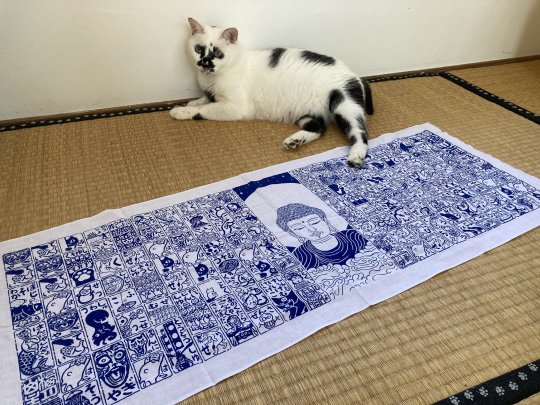

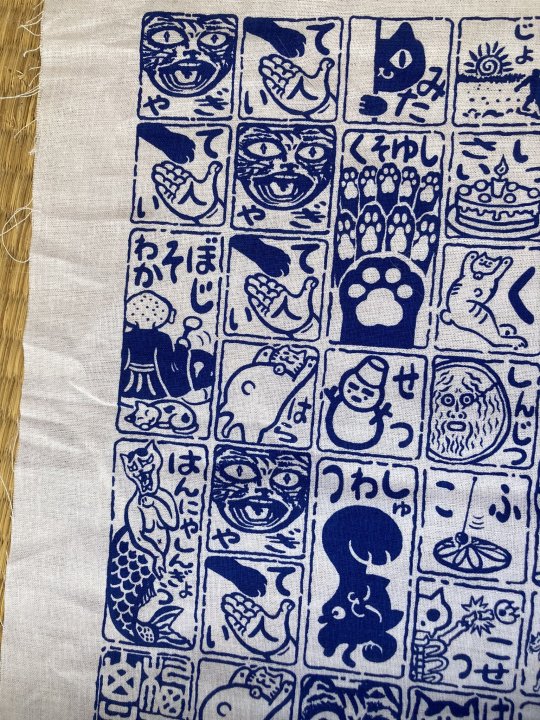
お客さまからのいただきものなんですが 般若心経をにゃ(猫)で表した手ぬぐい良すぎるから見て
これは唱えたくなるw 山口県の雲林寺(ネコ寺)のもので、経本バージョンもあるそうです!
108 notes
·
View notes
Text
Oh god, the heart sutra having "nothing is born, nothing is broken" in it and how it resonates with Mizu feeling like she should never even have BEEN. Born and broken being near synonymous in her experience.
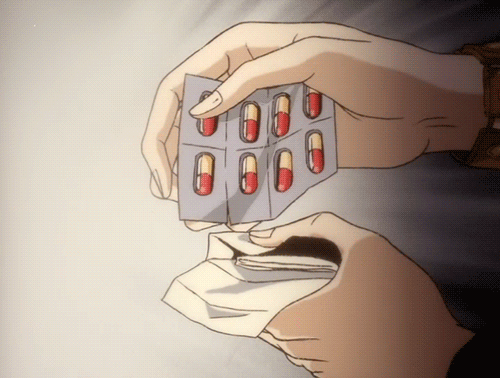
34 notes
·
View notes
Text

The pure nature of mind
-emptiness, lucidity
and intelligence without limit
- has always been inside us."
The four "faults" of natural awareness:
"So close vou can't see it.
So deep you can't fathom it.
So simple you can't believe it.
So good you can't accept it.
~ Kalu Rinpoche (1905-1989), was a mountain yogi in his youth, wandering in solitude among many uninhabited meditation spots for thirteen years. The fame of his spiritual accomplishments spread throughout Tibet.
Finally, Kalu Ripoche was persuaded to leave retreat and become the Vajra Master of one of the principal monasteries in Eastern Tibet.
Although supremely accomplished in all lineages of Tibetan Buddhism, Rinpoche was particularly renowned as a teacher of the profound Six Yogas of Naropa, of which he was considered to be the greatest living master.
Throughout his life, Kalu Ripoche gave teachings and empowerments to highest lamas, and to countless students around the world.
Exemplary in his non-sectarian views, the Ven. Kalu Rinpoche gave teaching and empowerments at centers in all of the major lineages of Tibetan Buddhism.
#buddha#buddhist#buddhism#dharma#sangha#mahayana#zen#milarepa#tibetan buddhism#thich nhat hanh#four noble truths#inner peace#padmasambhava#Kalu Rinpoche#amitaba#avalokiteshvara#Dilgo Khyentse Rinpoche#shantideva#heart sutra#vajrayana#vipassana#mantra#mindfulness#mind training#medicine buddha#meditation#manjushri
30 notes
·
View notes
Text
The body is emptiness and emptiness body
All things are empty.
Nothing is born, nothing broken
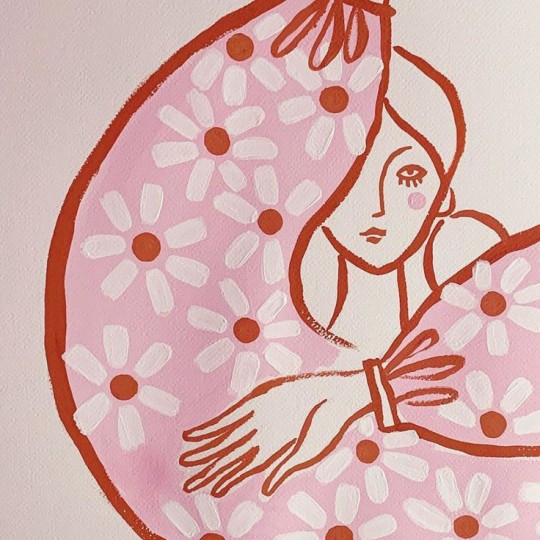
10 notes
·
View notes
Text
Heart Sutra: "The body is emptiness & emptiness body. All things are only empty. Nothing is born, nothing broken." ~ Series: Blue Eye Samuri (Netflix)
16 notes
·
View notes
Text
Whenever you are going to sleep, Intent to wake up In the void state with full awareness, As you have your eyes closed focus on whatever you see behind your eyelids, start repeating I AM or ANY other void state/pure consciousness affirmation that you absolutely LOVE and makes you feel LOVED, take deep breaths at your own pace and feel the manifestation of energy aka the breaths of yours to wash your soul with LOVE, feel the love In your heartbeats and find the comfort In that! I'd suggest listening to a guided sleep talkdown or a sleep meditation as those are extra comforting ❤️🥰
Inducing the void state however way you enjoy/love brings you peace, dedication, positivity, strenght etc!
Love Is the highest frequency and It Is permanent ❤️🥰
84 notes
·
View notes
Photo

Sanskrit Heart Sutra in the Mongolian Ali Gali script
30 notes
·
View notes
Text
Make Your Own Buddhist Sutra Book
Lately I’ve been talking a lot about home Buddhist practice, including home Buddhist services and such. These are things that devour lay-Buddhists often do (myself included), but then I realized I never talked about making one’s own sutra book.
There are a couple reasons why one might make their own…

View On WordPress
5 notes
·
View notes
Text
"If we take hold of something that has a particular form, saying, 'Yes, this is it! This is the truth!' we have then made Truth merely an idea. Soon we begin to discuss it and weigh it. But no matter how long we discuss such things, we will never find solutions to any of our questions. In time we will discover our idea doesn't always work. It's just relative.
Our problem is that we believe our relative truths are Absolute. This is why we are always fighting each other. We always try to get everything into our hands. We ignore the fact that whatever we can get into our hands is only what we have been able to measure by our yardstick. You can't possess Absolute as a form; you can't hold it in your hand. It is before any form appears. When we try to speak of it, naturally, negative terms appear.
People sometimes misunderstand Buddhism because it often uses expressions like no eyes, no ears, no nose, no heart, no mind, no self, no consciousness, and so forth. Sometimes they think Buddhism is nihilistic. But Buddhism is not nihilistic. It is not about the destruction of existence. It is about seeing the world before we measure it. There is nothing to pin down because the reality we are living is constantly changing. Yet, while there's nothing to pin down, nothing to hold in our hand, still we have the sense of 'I am here.' And then we take hold of that idea. This is why everyone is confused."
- Dainin Katagiri, from You Have Something to Say: Manifesting Zen Insight, 1999.
#dainin katagiri#quote#quotations#truth#change#sunyata#direct experience#epistemology#zen#buddhism#conflict#concepts#ideas#heart sutra
9 notes
·
View notes
Text
"Prajñāpāramitā is an all-embracing dharani;
It contains the teachings and meanings,
The insight into the Uncreated and supernatural power.
The name dharani has been given to it,
For it consists of sounds and words
Symbolizing religious persons and their doctrines
And stands for Reality itself."
—Kūkai: Major Works, Yoshito S. Hakeda
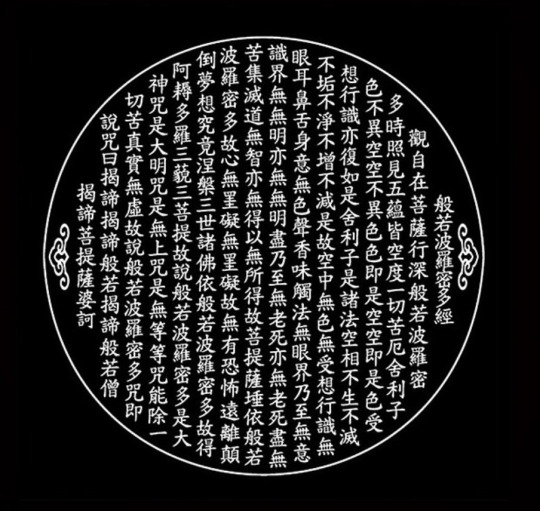
Source
3 notes
·
View notes
